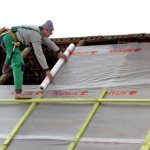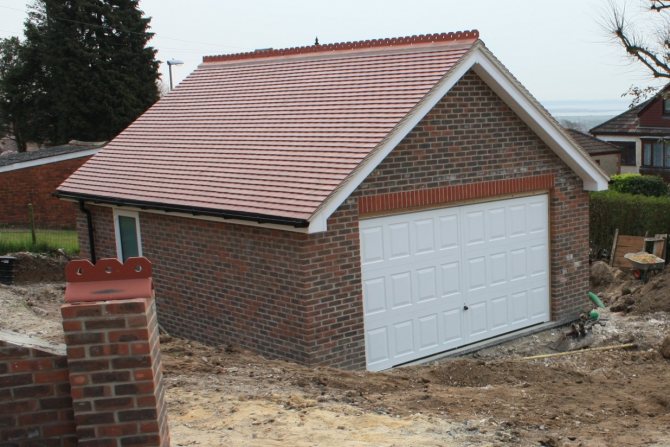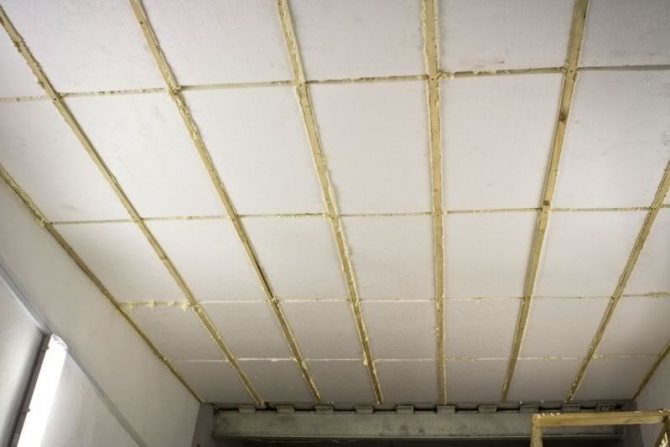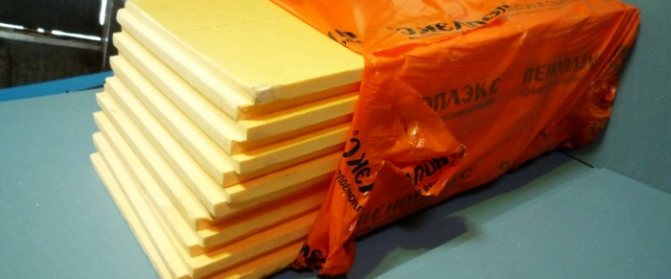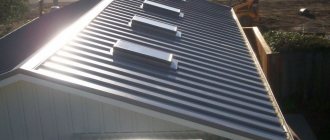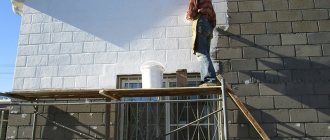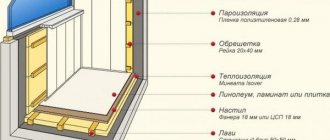In the conditions of a rather harsh and cold winter, installing thermal insulation on the garage roof is an important measure to protect its contents. In order for the insulation of the garage roof to be of high quality and effective, it is necessary to choose the right material, perform its installation with high quality and follow the entire technological procedure. You can perform the very procedure for installing thermal insulation in the garage yourself, without the help of specialists. To do this, you need to know how to choose the right material, and study the process of insulation itself. In addition, it is worth thinking about the interior decoration of the roof and walls so that the garage space does not look repulsive and it is pleasant to spend your time in it.
External insulation
When insulating the garage roof from the outside, it is important to decide on the thermal insulation material. The most profitable and practical, from the point of view of its placement, is a layer of wood chips or mineral wool. Sawdust is a cheap type of thermal insulation, and mineral wool is convenient for placing on the floor surface, as it is produced in mats. Despite the fact that sawdust has an affordable price, it has its drawback. The wood heat-insulating layer supports the spread of fire if a fire breaks out. For this reason, this choice is not permissible for premises that are subject to increased requirements from the fire service.
Whichever material option is chosen, external insulation is carried out in the following sequence:
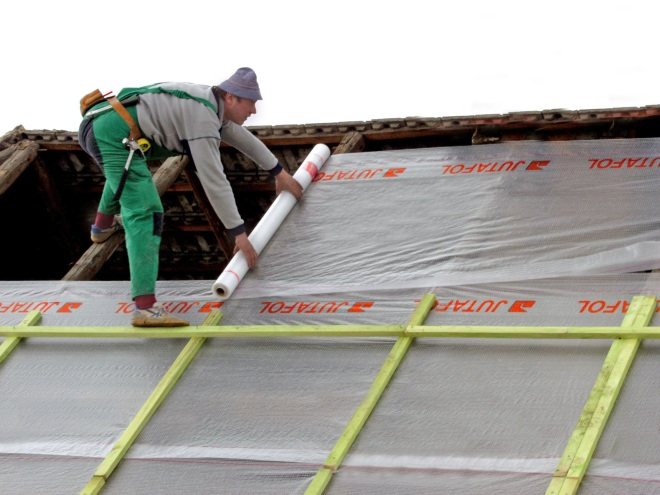
Laying a vapor barrier
• Laying of a vapor barrier for the escape of moist air. A suitable micropore film is used as a vapor barrier. Forgetting to cover the ceiling with a vapor barrier film, the owner of the garage runs the risk of getting abundant condensation of humid air inside the autobox space. The film is rolled out so that there is an overlap of 50-70 mm between adjacent canvases.


Insulating layer overlay
• Imposition of an insulating layer. If mineral mats are laid, there should be no inter-end gaps. When using sawdust, it is important to maintain a certain layer thickness. If sawdust thermal insulation is chosen, then its layer should correspond to 80-100 mm. Spread and level the insulation in an even layer, observing the required thickness.


Laying waterproofing film
• Laying a waterproofing film. The layer is necessary to prevent accidental soaking of the thermal insulation. A polyethylene film is used to protect the insulating layer. The tightness of the imposed waterproofing is achieved by overlap between pieces of polyethylene film, and fixing with adhesive tape.


Thermal insulation laying scheme
After observing all the technical operations for insulating the autobox, the main roof is laid in the form of profiled sheets, slate, etc.
How to properly insulate a garage roof from the inside
Insulation methods may vary depending on the thermal insulation material, its placement, and the design features of the roof. The main rule is to provide 3 layers of insulation structure: steam, hydro, thermal insulation.
The latter is carried out with the preliminary presence of the first two.
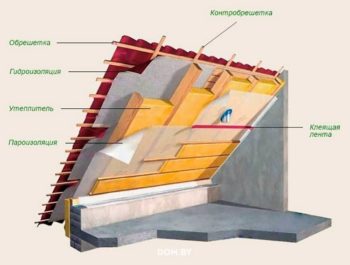

Stages of internal roof insulation:
- Clean from dirt and dust.
- Cover up all seams, joints and cracks, treat with plaster.
- Installation of crate parts on dowels and self-tapping screws.
- Creation of a hydro-barrier using a waterproofing film.
- Filling the crate with insulation. Sealing joints
- Creation of a vapor barrier from a polyethylene film.
- Covering with decorative material (chipboard, MDF, wood, drywall).
Don't forget about safety - select fire resistant materials and provide proper ventilation.
Warming by means of isover
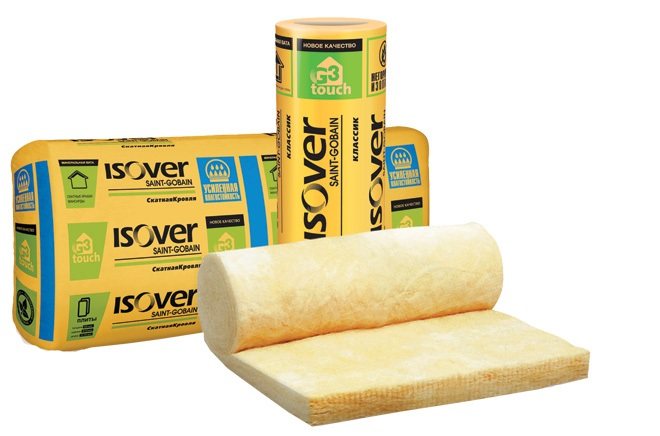

Isover
Choosing between external and internal insulation of the autobox, many owners prefer the second option, since it is easier to insulate the garage roof from the inside. This is due to the fact that there is no need to disassemble the roof, especially when the isover is used. The material has a number of beneficial advantages:
- Low thermal conductivity. It is a real barrier between the heated garage space and the cold ambient air in winter.
- Minimum specific gravity. Insulation does not have powerful mechanical effects on the overlap of the building. The property is relevant for garages with plank ceilings with a high degree of wear.
- Simplicity of styling. Thermal insulation material is produced in rolls, so you can cover the required area without unnecessary effort and loss of time.
To accommodate the isover layer, a special frame is required, through which the heat-insulating material is covered with decorative trim. For the frame, special galvanized sheet metal profiles and corresponding perforated hangers are used.
How to insulate a garage roof with your own hands


Each car owner, who also has a garage, sooner or later realizes that he needs to insulate such a structure. Usually, thoughts of this kind arise before the cold weather sets in.
The roof of the garage is the element that serves not only to retain heat, but also to protect against negative influences. Therefore, its insulation must be done especially carefully.
Foam ceiling
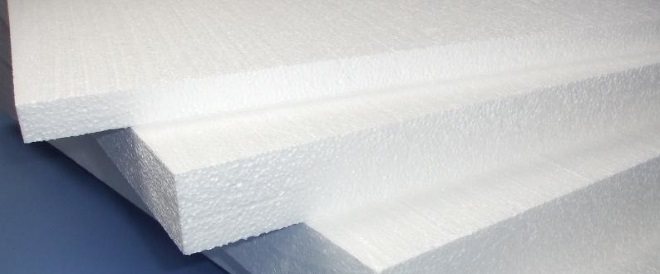

Styrofoam
Choosing affordable insulation for a garage, many garage owners prefer to use polystyrene foam. Insulating material is polystyrene foam plates.
Advantageous distinctive properties of expanded polystyrene:
- Light weight. The property is important not only during delivery, transportation, unloading, but also during the direct process of insulation.
- By choosing the optimal thickness of the slabs, you can ensure good insulation of the ceiling from the inside. The material has a low heat transfer coefficient.
- Even an inexperienced novice installer is easy to lay down polystyrene foam boards.
To fix the foam layer of thermal insulation, specially designed dowel-nails with a disc head are used. For one expanded polystyrene plate with an area of 0.8 sq. meter, two fasteners are enough. Plates are arranged on the surface of the ceiling end-to-end. For each fastener, by means of a perforator, holes with a diameter of 6 mm are made, corresponding to the diameter of the dish-shaped dowel-nail.
An alternative option for fixing polystyrene foam boards is to use polyurethane foam. The fixing agent is applied to the insulating material by the point method (4-5 "points" of glue are enough for one sheet of 0.8 square meters). After applying the foam, the foam settles on the floor surface, and is lightly pressed. The fastening method is simple and cheap, since there is no need to use a hammer drill and buy dish-shaped dowel nails. To exclude mini gaps between adjacent plates of expanded polystyrene insulation, it is practical to use the same polyurethane foam.
Insulation with penoizol


Insulation with penoizol
The material is a urea foam mass. The type of insulation has firmly entered the practice of thermal insulation in many European countries, thanks to the following advantages and technical features:
- The thermal insulation compound is applied directly to the floor surface under high pressure.
- There is no need to purchase fixing fasteners (saving money).
- A special utility warehouse for heat-insulating material is not needed.
- Cleanliness of the working area. No debris remains after the foam layer is applied.
For thermal insulation by means of penoizol, it is necessary to first make an appropriate frame on the garage floor, and sheathe it with a finishing finishing material (lining, PVC panels, etc.). Only after that, penoizol is "blown out" into the cavity between the garage floor and the finish. The material gets into the smallest cracks in the ceiling, filling them, so the quality of the finished work is high.
Materials for thermal insulation
When choosing a heater, one should be guided primarily by the climatic characteristics of the region and the design features of the roof. Today, the industry produces various types of materials for insulation, each of which has its own characteristic features, advantages and disadvantages. The most popular are the following heaters:
- Fiberglass, produced in the form of slabs or rolls. The material is non-flammable, not subject to decay, resistant to aggressive environments and has low thermal conductivity. The disadvantages of fiberglass include its susceptibility to mechanical stress, since glass threads are very fragile. When moisture gets in, the thermal insulation properties of fiberglass deteriorate. When working with fiberglass, safety measures should be taken so that its particles do not get on the skin and mucous membranes, as well as into the respiratory system.
- Mineral wool, the fibers of which are composed of basalt rocks. This type of insulation is more flexible and ductile than fiberglass, and is less susceptible to mechanical stress. Mineral insulation has good noise and heat insulation characteristics. The disadvantages of this type of insulation include their low vapor permeability and deterioration of thermal insulation properties when exposed to moisture.
- Polymer heaters produced in the form of slabs. These materials have a porous structure, due to which they keep heat well. Plates are available in various thicknesses and sizes. Polymeric thermal insulation materials are very popular because they have a number of advantages:
- low weight, due to which the roof structure will not be exposed to significant loads;
low cost;
- low thermal conductivity.
- Natural insulation - cotton wool, felt, cotton-based materials. These materials are rarely used to insulate a garage roof. The use of natural insulation is possible only after they have been impregnated with a special solution that protects against fire and decay.
Installation of such insulation does not require special skills, and due to its high resistance to moisture, polymer insulation can be used without the obligatory organization of a vapor barrier. The disadvantages of polymeric materials include their flammability and exposure to sunlight. Some polymer insulation contains additives that prevent combustion, and their ignition is possible only if there is another source of fire nearby.
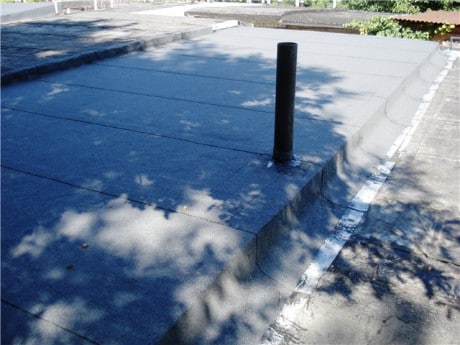

The organization of ventilation of the garage is an indispensable condition for carrying out thermal insulation work
Conducting the results
Asking the question "how to insulate the roof in the garage", you should adhere to the following tips:
- It is advisable to carry out external insulation if it is planned to build a gable roof.
- For floors with high operational wear, it is better to use foam plates.
- To exclude the purchase of excess heat-insulating material, it is necessary to carry out preliminary measurements of the ceiling.
These simple tips will help you perform roof insulation efficiently and quickly.
